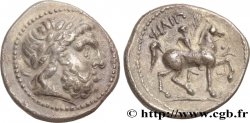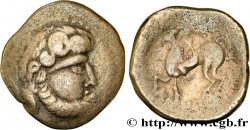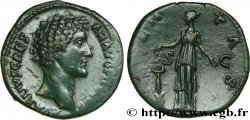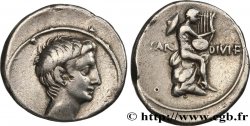bgr_868017 - DANUBIAN CELTS - IMITATIONS OF THE TETRADRACHMS OF PHILIP II AND HIS SUCCESSORS Tétradrachme “à la labrys”
850.00 €(Approx. 969.00$ | 731.00£)
Quantity
Add to your cart

Type : Tétradrachme “à la labrys”
Date: c. 280-220 AC
Metal : silver
Diameter : 26,5 mm
Orientation dies : 6 h.
Weight : 13,49 g.
Rarity : R3
Coments on the condition:
Flan large, centré des deux côtés. Joli portrait de Zeus, bien venu à la frappe. Revers à l’usure régulière. Patine grise
Catalogue references :
Obverse
Obverse legend : ANÉPIGRAPHE.
Obverse description : Tête laurée de Zeus à droite ; grènetis, un petite labrys (double hache) entre le grènetis l’arcade sourcilière de Zeus.
Reverse
Reverse description : Cavalier au pas à droite, tenant une palme de la main droite ; le cheval lève l'antérieur à droite, encadrée d’une torche de course et d’un caducée ; au-dessus du cavalier, la légende.
Reverse legend : FILIPP-OU/ L
Reverse translation : (de Philippe).








 Report a mistake
Report a mistake Print the page
Print the page Share my selection
Share my selection Ask a question
Ask a question Consign / sell
Consign / sell
 Full data
Full data















